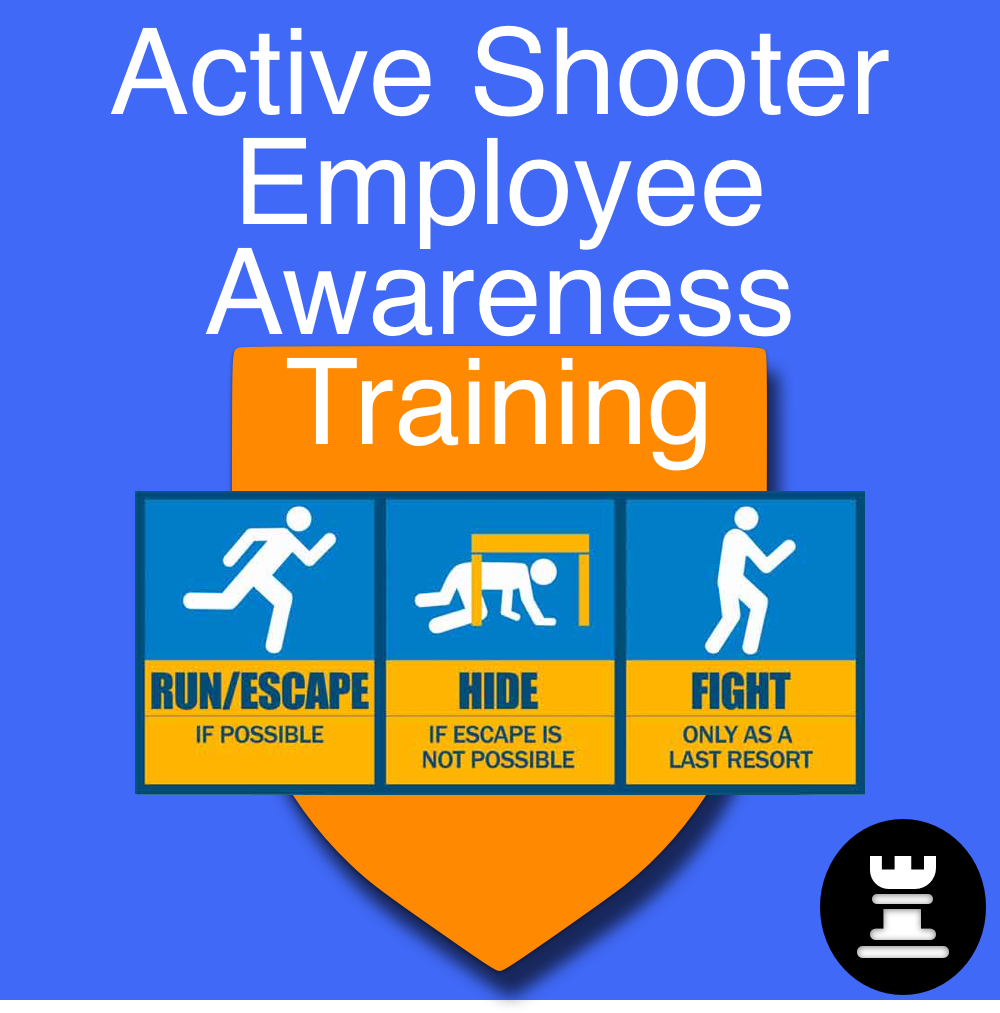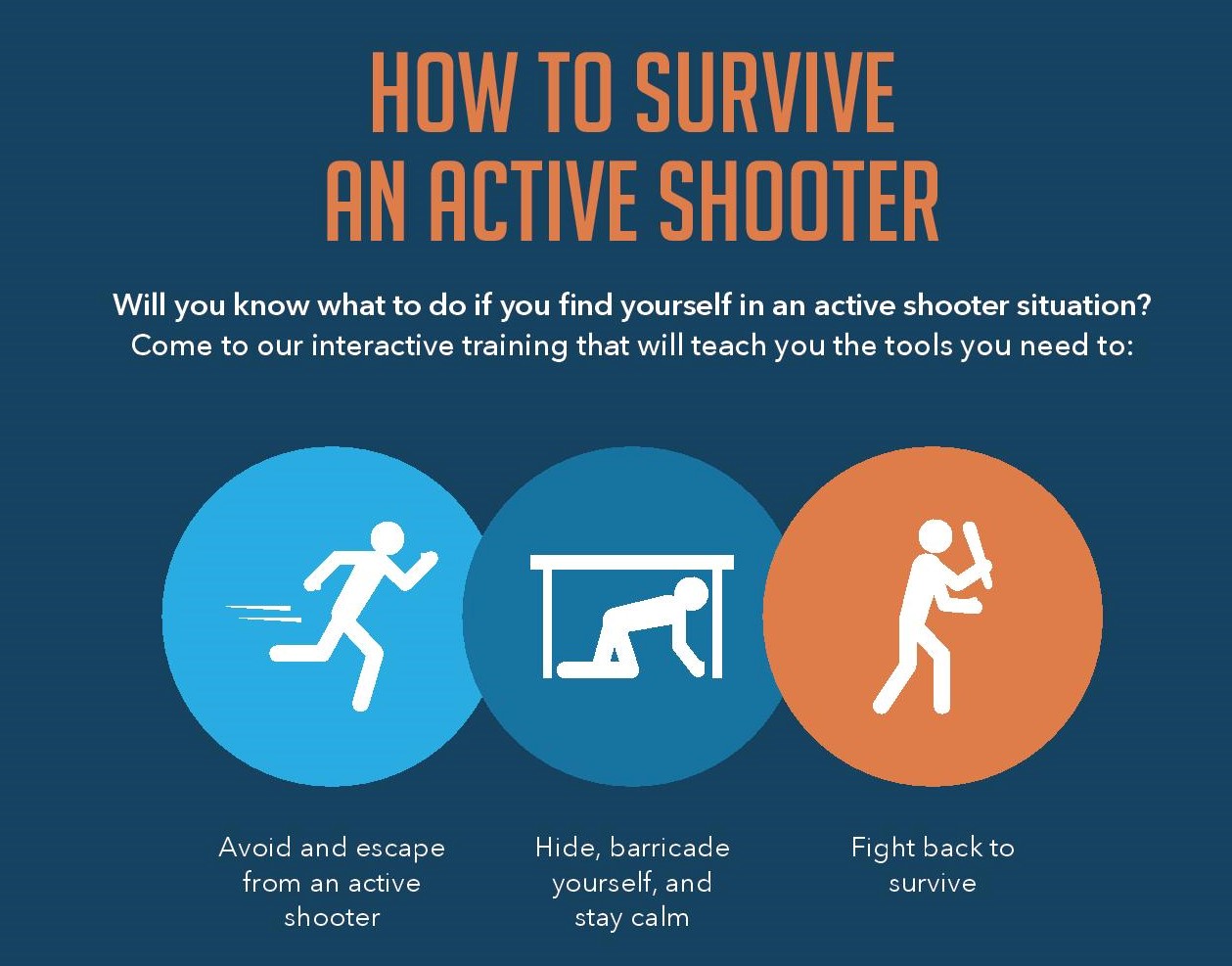The Importance of Active Shooter Training in High-Risk Environments
The Importance of Active Shooter Training in High-Risk Environments
Blog Article
Applying Energetic Shooter Training: Finest Practices for Developing a Safe and Prepared Community Atmosphere
As areas challenge the upsetting reality of energetic shooter occurrences, the execution of detailed training programs ends up being imperative. What are the essential aspects that can change a typical training program right into a durable version for neighborhood durability?

Understanding the Requirement for Educating
In a period marked by raising cases of violence in public areas, recognizing the demand for active shooter training has actually never been much more essential. Comprehensive training initiatives can furnish participants with the knowledge and skills to respond decisively.
Training cultivates a feeling of empowerment and readiness, allowing people to really feel even more safe and secure in their environments. The benefits of active shooter training expand past prompt feedback; they include enhancing interaction procedures and enhancing general safety actions within organizations.
Key Parts of Effective Programs
Efficient active shooter training programs include a number of essential parts that boost readiness and response capacities. First, extensive educational program development is necessary, making sure that training content matters, evidence-based, and tailored to the specific requirements of the organization or area. This consists of recognizing the dynamics of energetic shooter events and the emotional effect on people involved.
Second, sensible training scenarios need to be employed to replicate prospective scenarios, allowing participants to exercise decision-making and response methods in a regulated setting. These drills facilitate muscular tissue memory and develop self-confidence among individuals.
Third, an emphasis on communication procedures is vital. Establishing clear lines of interaction amongst police, emergency -responders, and participants makes certain coordinated reactions throughout an incident. Regular updates and correspondence course assist maintain interaction paths clear and reliable.
Fourth, recurring analysis and feedback mechanisms ought to be integrated into the training program - active shooter training. Assessing the efficiency of training with participant comments and efficiency metrics enables continuous improvement
Lastly, fostering a culture of safety and readiness within the neighborhood motivates caution and positive procedures, ensuring that individuals are not only trained but also involved in maintaining a protected environment.
Engaging Community Stakeholders

To effectively involve these stakeholders, it is important to communicate the purposes and benefits of the training. Holding informational sessions can aid make clear the training's function, address concerns, and detail the roles each stakeholder might play. Creating a stakeholder consultatory committee can promote continuous discussion, permitting for diverse point of views and understandings to be incorporated into the training program.
Structure relationships with neighborhood leaders and companies is additionally critical. Their support can improve outreach initiatives, increase involvement, and make sure that training is tailored to the distinct demands of the area. Additionally, stakeholders can help in sharing information and resources, enhancing the message of safety and security and readiness.
Ultimately, involving community stakeholders not only enhances the training effort yet additionally grows a feeling of ownership among locals, causing a much more resistant and enlightened area efficient in reacting effectively to potential risks.
Educating Shipment Methods
Utilizing a selection of training distribution approaches is vital to suit the varied discovering styles and needs of participants in active shooter training programs (active shooter training). Reliable training can take numerous types, including talks, hands-on simulations, on-line components, and interactive workshops. Each technique serves an unique objective and can improve the overall navigate to this website discovering experience

On-line components supply flexibility and ease of access, allowing participants to find out at their own speed. These can include videos, quizzes, and discussions to assess understanding. Interactive workshops encourage seminar and problem-solving, promoting synergy and communication abilities.
Incorporating a mixed method that integrates these approaches not only enriches the training experience but likewise makes certain that individuals are better prepared to react properly in the event of an active shooter scenario (active shooter training). By dealing with various discovering choices, companies can produce an extra informed and receptive community
Continual Assessment and Enhancement
Routine assessment and enhancement of active shooter training programs see this site are critical to keeping their relevance and efficiency. As hazards advance, so need to the methods and methodologies employed in training. Continual assessment guarantees that training content mirrors the most up to date knowledge Continued on active shooter incidents, including lessons found out from recent events and adjusting for emerging trends.
To promote this procedure, organizations should develop responses systems that include participant evaluations, specialist testimonials, and occurrence debriefs. Collecting data on participant efficiency during drills and workouts is crucial, as it highlights areas needing improvement and informs future training sessions. Additionally, engaging with regulation enforcement and emergency responders can provide beneficial insights right into the functionality and applicability of training protocols.
Consistently arranged evaluations of training products and methods should be mandated, fostering an atmosphere of development and versatility. Organizations must additionally encourage a society of continuous understanding, where personnel feel encouraged to suggest modifications based upon their experiences. By dedicating to continuous examination and renovation, organizations not only boost the performance of their active shooter training programs yet also enhance their total commitment to security and preparedness within the area.
Verdict
In verdict, effective execution of active shooter training necessitates a detailed approach that focuses on neighborhood involvement and practical simulations. By developing tailored curricula, integrating varied training techniques, and promoting partnership amongst stakeholders, neighborhoods can boost preparedness. Constant examination and responses devices are vital for adapting programs to emerging risks, therefore reinforcing total safety and security. Eventually, a dedication to recurring training and improvement grows a society of vigilance and readiness, ensuring a safer environment for all neighborhood participants.
Report this page